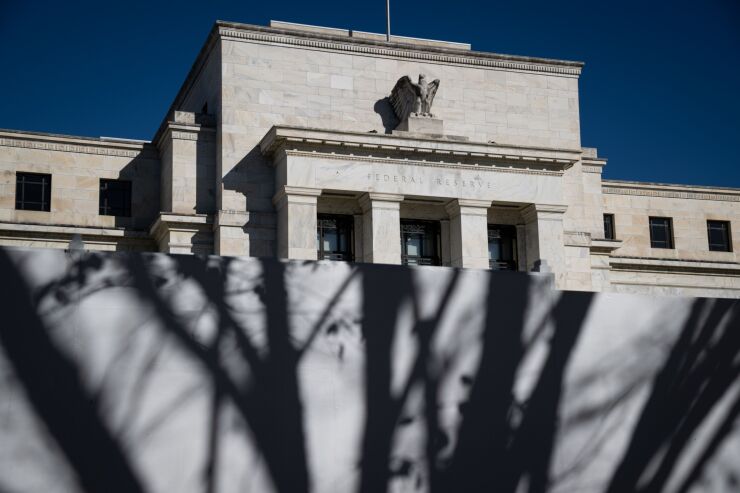
On Friday April 26,
All banks have experienced hits to their balance sheets as the Federal Reserve raised interest rates at the fastest pace in 40 years. No one would pretend the value of an investment in their 401(k) hasn't changed. But capital regulations allow banks to do just that. The vast majority of banks are not required to recognize unrealized losses when calculating their regulatory capital ratios, unless they sell the underlying bonds or loans. Regardless of the vagaries of regulatory capital rules, a bank like Republic First cannot escape economic reality if its loans and securities portfolio are worth so much less than they used to be that the bank becomes economically insolvent. They will ultimately take the hit, either now by selling assets at a loss, or over time as low-yielding assets reduce earnings and erode capital.
I estimate that collectively banks face between $700 billion and $1 trillion in unrealized losses due to higher interest rates. I also estimate that, as of year-end, more than 150 banks in the country had capital (adjusted to reflect unrealized losses) below the trigger for regulatory intervention known as prompt corrective action.
But I dare you to find any hint of the problems causing these repeated bank failures in the official regulatory capital ratios in the industry as a whole, which have remained largely constant at about 15% of risk-based assets despite hundreds of billions of dollars in unrealized losses. For recent bank failures, reported regulatory capital levels hid clearly insolvent banks: Silicon Valley reported $13.7 billion in regulatory capital, with more than $17.7 billion in unrecognized losses; First Republic reported $19.1 billion in capital, with more than $22 billion in embedded losses; and most recently Republic First had reported almost $300 million in regulatory capital, but was clearly insolvent with more than $400 million in unrealized losses on securities alone.
How could a critical metric like regulatory capital for banks be so wildly inaccurate in failing to identify clearly insolvent banks that require action? The simple answer is that the rules as drafted focus on credit risk and largely ignore interest rate risk, permitting banks to ignore rate-driven losses on securities and loans.
During this week's Federal Open Market Committee meeting, officials voted to lower the cap on the amount of Treasury securities that can roll off the central bank's books each month from $60 billion to $25 billion.
When interest rates are stable or declining, this quirk in the bank capital rules doesn't matter. But, as is the case today, when rates increase sharply and the value of bank securities and loans drops materially, this blind spot, or loophole, becomes critically important.
The last time the Federal Reserve boosted rates to fight inflation was the Volcker-era shock of the early 1980s. The value of fixed-rate securities and loans dropped, and a wave of depositories failed, triggering the savings and loan crisis. Once again, rates are up, and many banks are struggling. The picture is brighter than it was in the 1980s: More than 95% of all banks are positioned to weather the effects of higher rates without the need for FDIC intervention. That said, the fact that more than 150 banks are critically undercapitalized is worrisome and worthy of focused action.
Even with capital metrics insensitive to rate-driven losses, signs suggest that regulators are well aware of the resulting challenges and are ramping up supervision appropriately. The closure of Republic First is one such sign. But it is time to fix the rules and, luckily, the fix is simple. Banks already calculate unrealized gains and losses on securities and loans. Any material gains or losses could simply be added to or subtracted from capital to determine whether a particular bank might be insolvent on an economic basis. Job done. Legislation pending in the House of Representatives would move in this direction by requiring banks over $100 billion in assets to recognize such losses, but Republic First is clear evidence that the problem with regulatory capital rules extends beyond large banks.
Recognizing that changes to rules take time and capital infusions are needed by many banks immediately, regulators should also provide clearer messaging to bankers and investors regarding the extent to which they will, and will not, permit institutions to continue to operate with a given level of unrealized losses. With clarity, private capital can flow in abundance to fill the holes in balance sheets created by higher rates. Without that clarity, regulators will continue to be saddled with the risks and supervisory burdens of large numbers of banks that look fine on the surface but are in fact undercapitalized.






